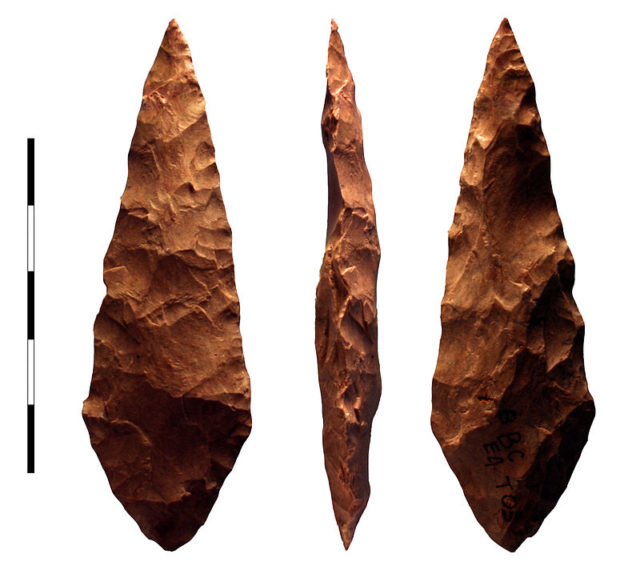It is easy in today’s world to take tools for granted. Walk into any home improvement store, and you can find a myriad of tools to do whatever job is at hand from a hammer to an ax to a screwdriver.
It is rare that anyone in the 21st century has to make their own tool for a task, much less one crudely created by hand from rocks like cavemen did.
Prehistoric humans were, of course, not so fortunate as modern humans when it came to tools, however, they were innovative in how they manufactured their own. Going back 20,000 years ago in Asia and Europe, humans heated rock to transform it into tools or blades for hunting. This early technique made the rock hard and brittle, so it was easier to break, shape, and sharpen. Intriguingly, a recent discovery in southern Africa reveals that one community of prehistoric humans was using the same technique for blades even further back – 70,000 years ago.

Researchers from the University of Bordeaux, France, studied artifacts made from a type of rock called silcrete, found at the Middle Stone Age site of Klipdrift Shelter. The site, located on the Cape of South Africa, is believed to have originated during the Howiesons Poort, a time of progress and innovation in culture and tool production for early humans.
Anne Delagnes and her team analyzed samples of a type of rock called silcrete from 31 locations at Klipdrift Shelter. According to a study published by the team in Plos One, early humans deliberately placed silcrete in embers to change the properties of the rock. This is evidence that early humans understood that heating rock made it easier to work with and also made it more durable.
In addition, researchers concluded that this technique was common and crucial to early humans because 90% of the artifacts they studied had been treated with heat. The heated silcrete had a smoother surface than untreated silcrete and showed signs of tempering residue from direct contact with embers, Mail Online reported.

Heating the rock likely happened in the early stages of the tool or blade making process. Stone would be scaled away to shape the silcrete core and create the desired blade, which would then become sharp and tough. As the researchers wrote, “The whole operational chain, from core production to blade production and manufacturing, benefitted from the advantages of the heating process.”
The silcrete artifacts from the Klipdrift Shelter site could be the first evidence that prehistoric humans purposely and routinely used fire in the whole lithic production chain. It also sheds light on how early humans creatively adapted to their environments. The geology of the area around the site is not conducive to toolmaking, but the prehistoric community used the innovative technique of heat treating stone to thrive. According to researchers, “The adaptable and innovative attitude was likely one factor that favored the widespread distribution of Howiesons Poort material culture in southern Africa.”

Unfortunately, the prehistoric humans who once inhabited the area of the Klipdrift Shelter and their ingenious toolmaking techniques did not survive.
Thousands of years passed before their early technology was rediscovered for use in Asia and Europe, eventually evolving into the techniques that make tool production and use so simple for humans of the present day.
